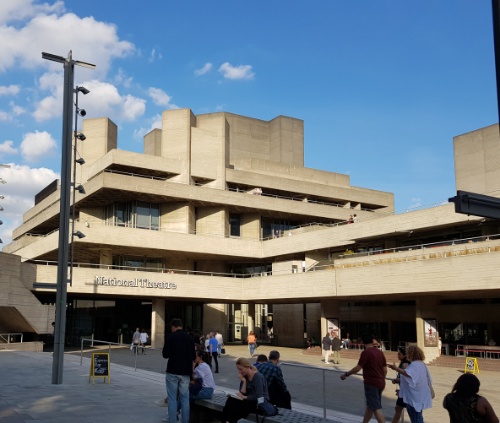“What did you think?” Asked Mirinda.
“Relentless,” I answered.
We’d just been to see Salome by Yael Farber at the National. Originally she was going to direct a new version of the Oscar Wilde play but then gradually realised that the story of Salome was a lot more diverse and mysterious than the one portrayed by both Wilde and popular culture.

The director’s note reminded me of the rumour spread about Lucrezia and Cesare Borgia. Lucretia wanted to get out of her marriage to Giovanni Sforza. The grounds for divorce were that the marriage had never been consummated because Sforza was impotent. Of course, there is no evidence that this was true and, in fact, it’s probably not because the divorce was as politically expedient as the marriage had been.
After the divorce, rumours started spreading about an incestuous relationship between Lucrezia and her brother Cesare. A lot of historians believe this rumour was started by the Sforza family in order to assuage their feelings over the possibly droopy old Giovanni. The rumour has persisted for over 500 years and even today people believe she was an awful seductress with all the morals of a bonobo.
Which brings me back to Salome.
The biblical story we all believe to be true (and I use that phrase carefully) is that Salome was the daughter of Herodias who was married to Herod Tetrarch of Galilee. Herod had the hots for his step-daughter while Salome had the hots for John the Baptist. Because John wouldn’t kiss her (or anything else) she agreed to dance the Dance of the Seven Veils for Herod if he would grant her anything she wanted. He agreed. She danced and then demanded the head of John the Baptist on a silver salver. Then she kissed him.

Farber (director/writer) researched the story and discovered a lot of interesting facts…like the lack of facts for the above story. And so this Salome is an attempt to ‘set the record straight’ as it were.
One of the things she does is blame Pontius Pilate for the rumour about Salome. He was angry because he didn’t want John to become a martyr which his death in such a fashion created.
Actually, I really liked Pilate. When he first turns up in Galilee he starts giving the Roman position to two shocked Temple priests and I couldn’t help but agree with him. He wanted to build an aqueduct in order to bring fresh water to the population and insisted that the priests use the money in their treasury to fund it otherwise he’d just tax the population. The priests refused saying the riches of the Treasury were for the glory of god. Pilate gets his way.
Anyway, all of that doesn’t quite prepare you for the play we saw. My description of ‘relentless’ is because the whole thing (1 hour 40 minutes without interval) is played almost on one level. There is no deviation from it and it’s wearing. It stops being surprising or exciting or dangerous or anything above the line of the level established from the start.
One of the things I learnt from my years in theatre is that the audience needs variety otherwise they grow bored and restless. It’s important to give them highs and lows. The other thing that this variety of pace does is underscore the points you really want to make as a director. I’m not going to cite a whole load of examples but there’s always mileage in presenting a hilarious joke quickly followed by terrible tragedy. The tragedy is increased because the emotional landscape has radically changed.
In saying that…the staging of Salome was amazing. Easily one of the greatest creations I think I’ve ever seen on stage. I don’t think I’ll ever forget the sand.
The direction through and around the stage was also superb. The performers were excellent as well, especially given they had to hold everything at the same level for the whole time. (They must really go home exhausted.)
The soundscape was exceptionally brilliant as well. Two women singing Hebrew-like songs continuously with a deep monotone thrum behind them. It sounds awful but it was, as I said, exceptionally brilliant.
Here’s the visually stunning trailer:
One really disappointing feature was the strip. The whole piece is basically a feminist treatise but then, for reasons known only to the director, Salome strips completely naked in front of John the Baptist (who they claim is naked but wears a loincloth). I thought this was salacious and unnecessary. How much more power would she have had had she remained clothed and not judged by her ‘femaleness’?
Don’t get me wrong, I’m all for naked bodies on stage. It’s never been a problem for me. I have quite a few cast members who will attest to that. But this just diluted the message that Salome was more than just the good time gal she’s popularly portrayed as. (Actually, Mirinda was so angry at this point she almost stood up and yelled at them!)
So…great staging, great lighting, great research, superb acting…could do with some light and shade.
And, finally, this was spotted across the Borough this morning:

Sent out for three bags of balloons…


